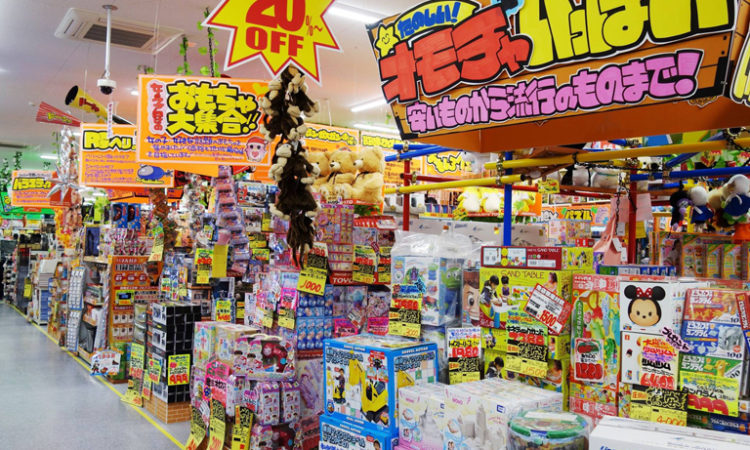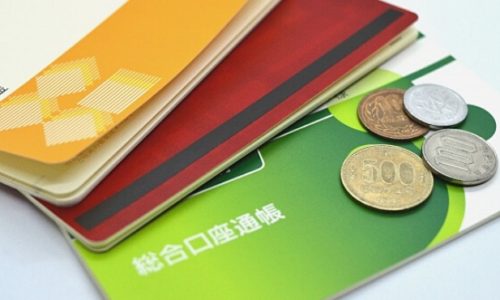Is Japan still a cash-oriented society? In short, yes, it is. In my experience, this country is very conservative in most matters, and money is no different. Let’s get into it.
ATMs in Japan
These are plentiful in Japan. A few points are worth noting, though. To begin with, in Tokyo at least, every convenience store has an ATM. Every branch bank has a row of ATMS. You can deposit money, withdraw money, transfer money, check your balance, and pretty much anything on these wonderful machines (I’m assuming it’s the same in other countries, but I haven’t used an ATM in any other country for 13 years or so, so I don’t really know). For certain periods of the day, using these machines does not incur a handling fee, whereas, at certain times, there is a handling fee (tesuuryou). Also worth mentioning is the increase of ATMs allowing foreign tourists to directly withdraw money from their foreign bank accounts. I think two years ago when one of my friends from America came to visit she was able to directly withdraw money from her account from the ATM at my neighborhood 7-11 (twelve or 13 years ago, I remember my friend who was visiting from America had a very hard time finding an ATM where he could access his account in America). Also worth mentioning is a complaint I have against Mizuho bank, which is my bank. For some reason, Mizuho’s ATMs are out of service after 8 P.M. Saturday night until Sunday morning. Apparently, it’s for some kind of server or computer maintenance, but this has been the case for years now. There have been several times where this policy has shot my Saturday night, for just I was getting ready to go out, I realized I could not withdraw money because it’s Saturday at 9 P.M. Also over the last year, Mizuho has really stepped up this maintenance, and every two months or so, all Mizuho ATM services are halted for three full days! A final word on ATMS concerns furikomi sagi (ATM transfer fraud). This fraud takes many forms, with one variety or form of the furikomi sagi being called ore ore sagi (“hey, it’s me! fraud). With ore ore sagi, the criminal will call a series of old people (all of these swindles target old people as far as I can tell), and say “hey, mom? It’s me! Yeah, it’s me!” to which the old person, who perhaps haven’t seen or heard from his/her son in years, will reply, “Mitsuharu, is that you”? Working from that, the criminal will say, “yeah, it’s me, Mitsu. Listen, mom, I’m in a real jam. I just caused a traffic accident, and the other person is hurt…..” Then, the criminal’s buddy, impersonating a police office or something will get on the phone to reassure the mom that the injuries are slight, that they (the police) don’t want to arrest Mitsuharu, and that with a transfer of 1,000,000 JPY (about 10,000 USD), the victim will not press charges or seek further damages. This swindle takes many other forms, and I honestly can’t understand how any of these work. As I said, they tend to target old, lonely people who are not very tech savvy, but then again, I would seem to fit into this category of victim, yet I would never fall for this. Anyway, every ATM has posters warning against this fraud and for certain processes on the ATM machine (such as transferring money), you have to click several buttons that will ask “are you sure you are not being victimized by furikomi sagi”? It’s that big of a problem here.
Banks and Hankos In Japan
Banks in Japan tend to be quite conservative institutions, and when I first came to Tokyo twelve years ago, one needed a Hanko (a personalized stamp in which your name is rendered in Chinese characters) to open an account. I think they may have relaxed this rule for foreigners, but several months ago, when I went to my branch bank to have a new bank book (tsuucho) issued, they insisted on my presenting the Hanko I used twelve years ago when establishing this account. I didn’t have my Hanko with me at the time, so I made an excuse and told them I had lost it, so obviously, I could not present the same Hanko. It took thirty minutes of very tense negotiation with the bank manager before she finally agreed to make an exception for me (I probably should have just gone home and got my Hanko, as this would have taken less time, but in for a penny, in for a pound and all that). A Japanese colleague of mine made my Hanko for me twelve years ago, where my family name is spelled out with a random choice of Chinese characters (ateji), rendering my family name Gilbert 義琉鳩. I think if you go to an actual Hanko shop, you can either have your name rendered in Katakana (a Japanese syllabary used for foreign loan words) or in Chinese characters. In Tokyo, I think the bank is the only institution you may be required to have a Hanko as a foreigner, though in the countryside (when I lived there), you needed this stamp to join a gym, open a bank account, sign your lease, and even to sign out for your lunch break.
Cash, Credit Cards, Debit Cards In Japan
When compared with other countries, Japan remains a largely cash-based society. Credit cards did not really exist in Japan until the 1970s (and really were not widely used until the bubble economy of the 1980s). The reason is that, on the whole, Japanese people have a strong aversion to debt. Miyabe Miyuki (an author I introduced a few articles ago) wrote an entire book about this topic. The book is tilted Kasha, and it details many of the problems that come with using credit cards, notably personal bankruptcy. During the bubble economy, such horror stories of personal bankruptcy became widespread, and I think these reinforced Japanese people’s inherent aversion to debt in the first place (and by the way, the issue of debt is a very big issue in Japan; over the last few months as I applied for permanent residency, I learned that having personal debt is a big obstacle for some people when they attempt to get permanent residency). As such, I think debit cards, which don’t entail “debt” or “interest” etc are more popular or accepted in Japan. However, even today (and especially among people my age), cash reigns supreme. The chance of being mugged or robbed on the street is practically zero and I as I explained above, Japanese people have a real aversion to debt, so most Japanese people will carry the equivalent of hundreds of dollars at a time on their person. Indeed, when you become an adult, not having a credit card is a royal pain in the neck, so I do have a credit card, but I only have one, and most of my Japanese friends only have one or two credit cards. I think younger people who only know the economic stagnation after the bubble economy are even more averse to having credit cards.
IC cards in Japan
SUICA and PASMO are the two best examples I know of. These are essentially train passes, with SUICA issued by East Japan Railways and PASMO issued by various Shitetsu (private railways, such as the Odakyuu Line and Keio Line). First of all, when you are a company man, normally, your company will provide you every month with the money needed to commute to the company (these are also called a “teikiken” (fixed period card (or just train pass)). The problem with these teikikens is that a month’s worth of money is charged on these, and if you lose it or break it (both of which I’ve done), you have to go to a major station to regain the already-loaded amount. Now, that I work from home, I have a simple PASMO that I just load money onto as needed. In addition to being a train pass, these can be used at almost any convenience store or vending machine. I have friends who have the equivalent of hundreds of dollars on their PASMOS because, for everyday purchases, this form of payment is much more convenient than paying with cash.
Mobile Payment in Japan
Apple Pay, Quickpay, and other mobile payment options exist in Japan, though, from my basic research in writing this article, such options are not as widespread as they are in other countries. I do, however, see many (young) people using their cellphones to purchase things at convenience stores and the like, so I think, in Tokyo at least, these are options are fairly available. Also, there is apparently a new service call PayPay which is run by Softbank. This mobile payment service is offering all kinds of rebates to increase the number of users, though I don’t know anyone in my periphery who uses this service. I think there are several factors working against the proliferation of such services. For one, as noted above, ATMs are everywhere in Japan, there is virtually zero street crime, so carrying cash is not dangerous, and I think many smaller restaurants and shops are averse to handling such payments. I will talk about this in more detail below, but Japan is essentially a conservative country, and there is a real resistance to trying new things. On a personal level, I see this all time at work. During meetings, whenever someone introduces a new idea or proposes doing something different, there is almost an automatic “huh? We’ve been doing this, this way forever, so why do you want to change things? If it ain’t broke, don’t fix it.” The reason cashless options aren’t adopted, honestly, I think boils down to this: Japanese people are conservative and conservative people are reluctant to try new things. Books have been written about how Japanese culture is reluctant to change, how the nail that sticks out is hammered down, how Japanese culture, above everything else, values putting others ahead of oneself, and basically, I think this is the reason Japan remains a cash-based society.
My Own Opinion
To begin with, I’m a bit of a Neo-Luddite: I don’t like technology, I’m not good at computers and techy stuff, and even though I work in a very technical field (patents), I’m really not cut out for this stuff. I understand the reasoning behind a cashless society, insofar as this is more convenient, safer, etc, but my heart lies with the more conservative Japanese people, who view these developments with suspicion. Younger Japanese people seem to be quite amenable to these new services, but Japanese people of about my age appear to be quite resistant to this movement, as I don’t know a single Japanese person in my periphery who makes use of these services aside from SUICA and PASMO (I use these, too). I tend to think that this conservative approach to money and fiscal matters, in general, is a good thing, and I, along with the majority of Japanese people my age, do not plan to use these mobile cashless payments (to be perfectly honest, I am quite skeptical of fiat currencies in general, but that’s another story).
Conclusion
Japan is a surprisingly conservative country. When it comes to money matters, this is especially true. I think Japanese people traditionally harbor a deep aversion to the idea of debt. When it comes to new things, Japan always seems ten years or so behind the times. For example, it was 2007 or 2008 when my friends in America started using smartphones, and I think it was honestly 2012 or 2013 when everyone (including me) started using smartphones in Japan. Craft beers took off in the mid-2000s in America, whereas they are just finally taking off now in Japan. Vaping and electronic cigarettes were illegal in Japan (not illegal to possess, but illegal to sell) until just a few years ago, whereas now, they are quite common. The government in Japan has announced plans to increase the number of users of cashless options, with a goal of reaching a set amount by 2027. When compared with other countries, notably South Korea and China, but also America and other western countries, the number of users of cashless options is quite low in Japan (the only country that is close to Japan in NOT USING cashless options is Germany, but this would seem to bolster my above hypothesis about how conservative countries tend to view these developments with suspicion). I suspect, however, that Japan will remain a cash-based society for a long time.











